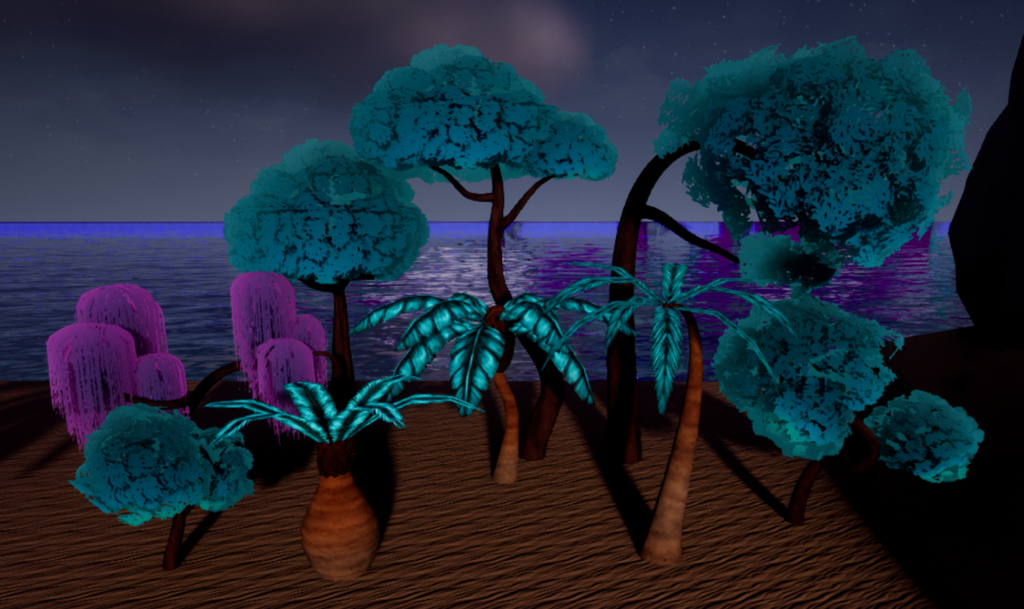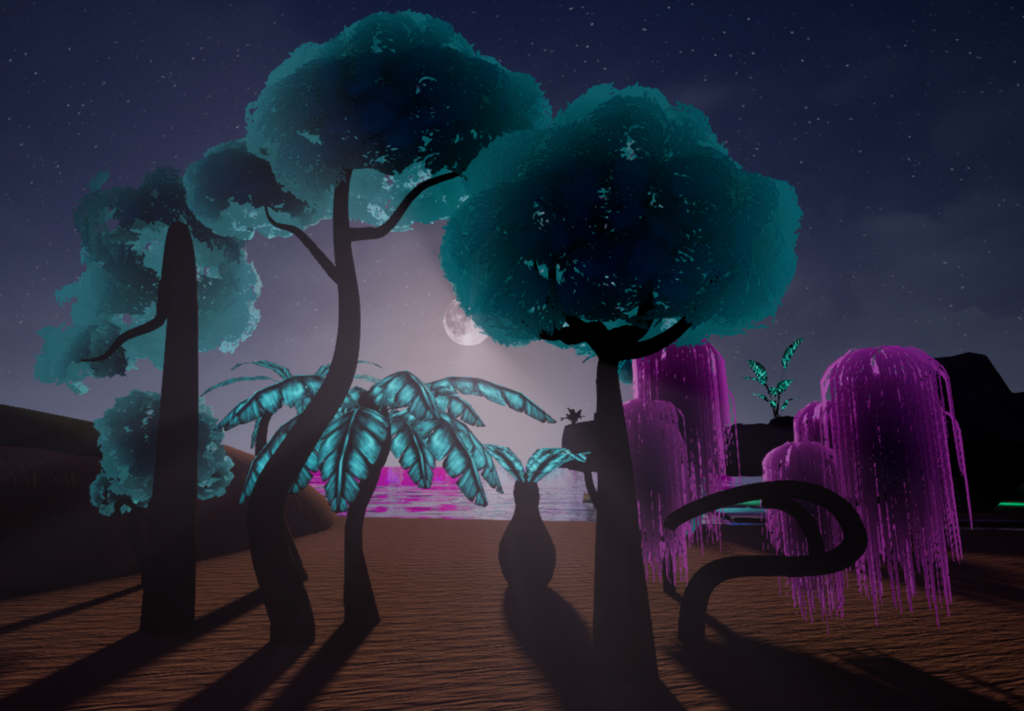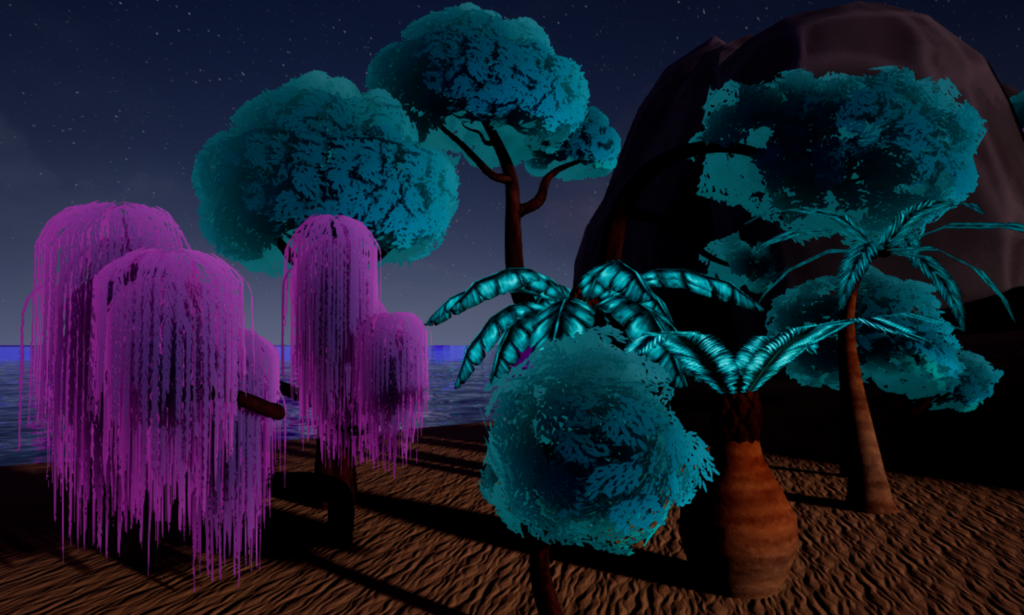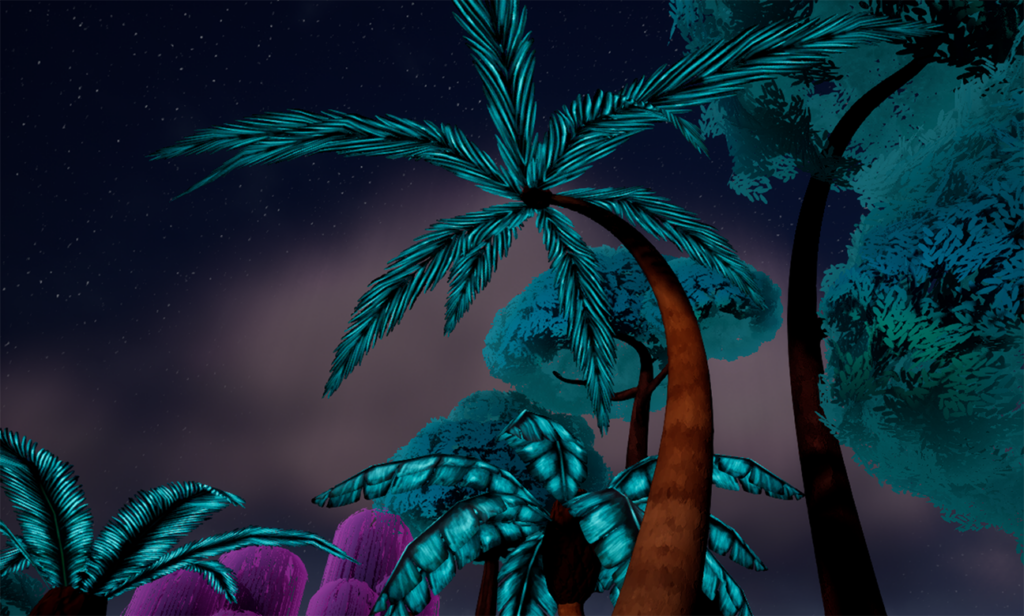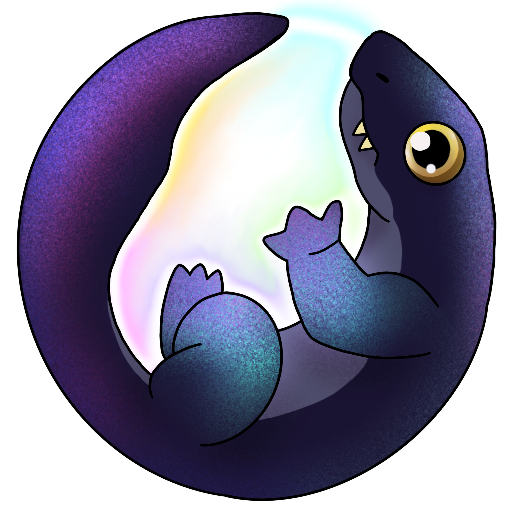When creating environment assets for a game, you need to take into consideration the environmental art style, as it will influence the mood you want to build. With a much larger space to fill, it would be impractical to make unique assets for every single item in the scene. Assets that can be reused and not seem out of place are very valuable. Thankfully that isn’t too hard when it comes to plants, as we expect to see many of the same plants within an ecosystem.
In our game, Land of Lights, our environment is in a perpetual night and takes place on a tropical island setting. Many of the plants there have developed bioluminescence in response to the constant darkness and have glowing patterns on their leaves or stems. My first assignment was creating trees, which are frequently seen on screen. When designing these trees, I created criteria for what these trees needed to include:
- Variation – different types of trees, that do not appear to repeat. There needed to be the appearance of many unique examples, but also not significantly increasing my workload. Keeping them noticeably different while remaining believable in a natural environment.
- Environment – Keeping in mind the environment these trees live in, to build a cohesive environment. This being a tropical island, coniferous (pine) trees would not be appropriate, and while there is beach present, there is a more forested jungle area inland, so palm trees might also be sparse. I needed a mix of both more standard trees and palms.
- Style – We have a medium poly, colorful style in our game. The trees couldn’t be too realistic or too simplistic. In fact, with how plentiful they would be, the trees would be a determining factor in how players perceive our style and how other assets match or clash with the art style, meaning a lot of thought needed to be put into how the final product would turn out.
- Glow – While we wanted elements of the trees to glow, they couldn’t be too strong or distracting, else it would take away from the rest of the world and potentially confuse players when it comes to identifying which elements of the environment are interactable, and what is just part of the scene.
With that in mind, I started without much in the way of set concept art, instead using a stylized tree method I learned for a previous project, focusing on shape and flow of the trees more than any realism. I made about 5 varieties of tree trunk for each category: Large jungle tree, small jungle tree, and palm tree. After feedback and deliberation, we narrowed it down to three in each category.
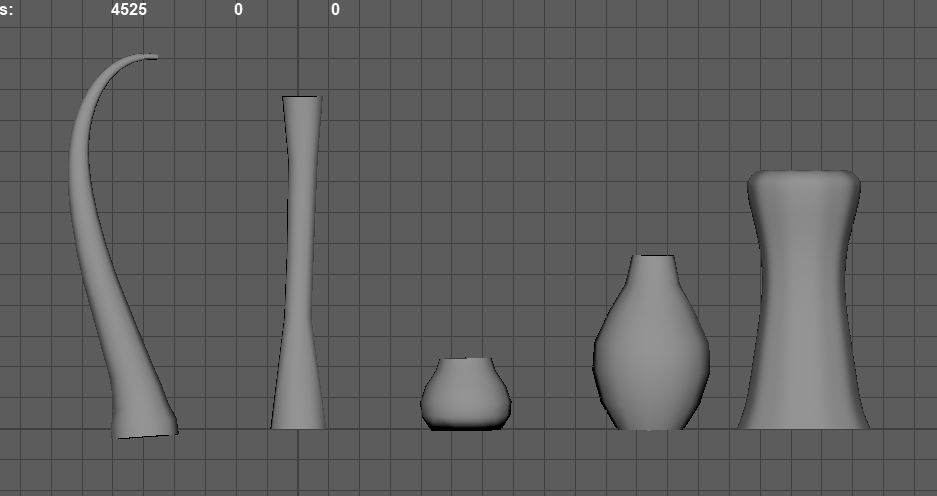
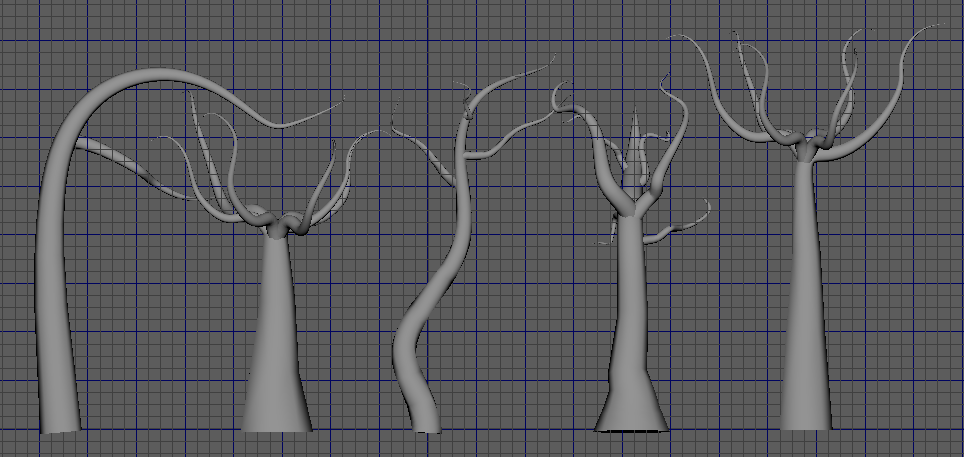
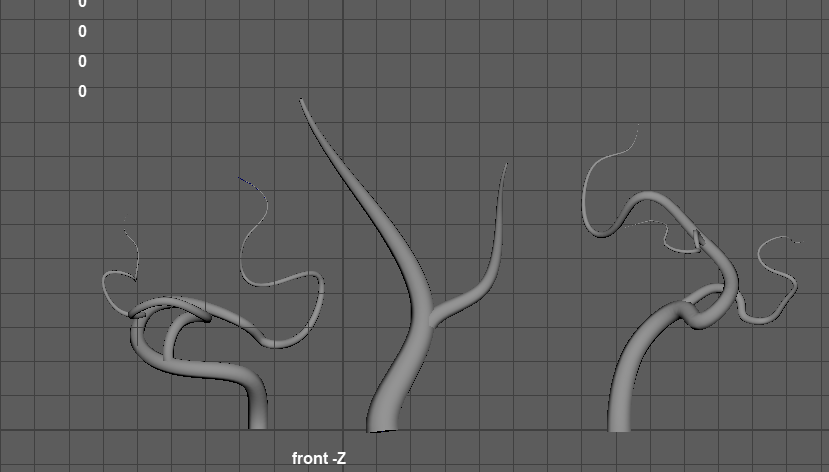
After deciding on which tree trunks we liked most, I began creating canopies for the regular trees. I used the same method I used in a previous project as well, which mostly consists of making a cloud of flat planes, on which the leaf shape would be projected onto each individual plane later in engine. However, the shape and density of the cloud is still important, otherwise it could come across as unnatural, or too sparse or dense in leaf density.
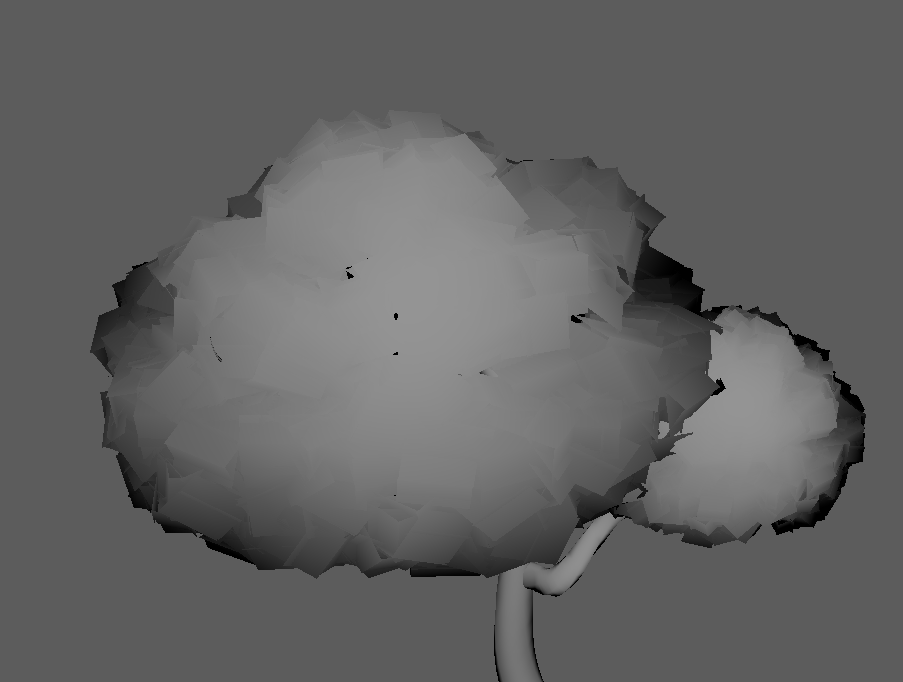
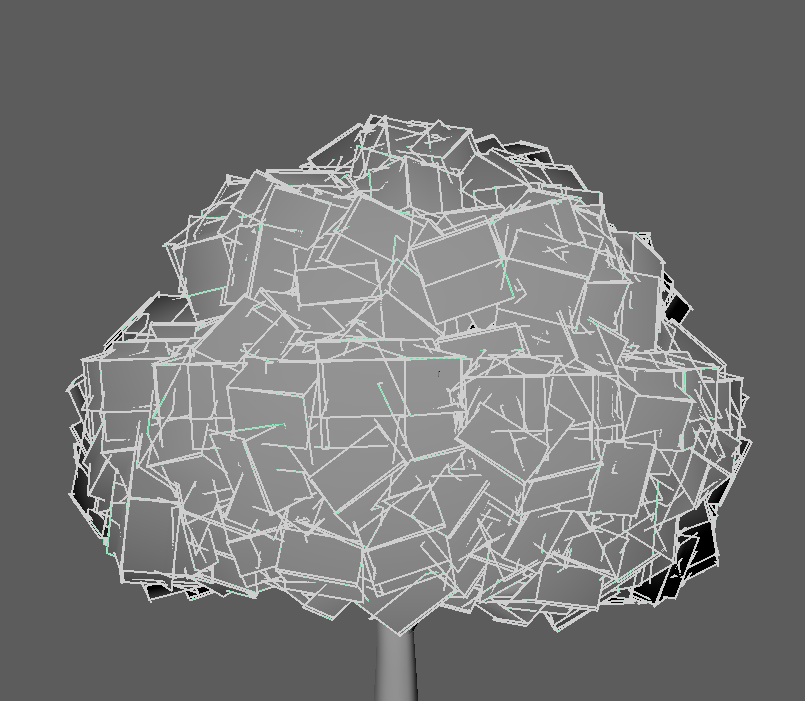
The palm trees were a different process, where we planned on using hand drawn fronds as the actual textures for their canopies, meaning they just needed something to be projected onto. There is no need to create a highly detailed frond, instead simply bending a plane into the general shape we want so the textures have somewhere to go. This is a more effective and easier method all around, though results in some very underwhelming and… geometric looking canopies.
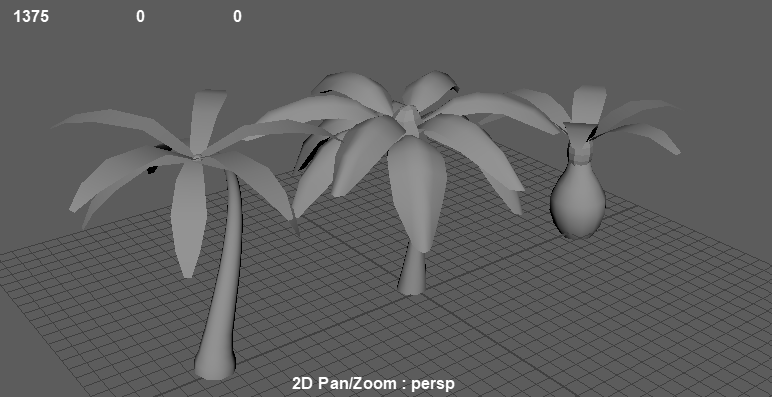
Now that the trees were structured, I could get to the part I enjoy most – textures! I wanted them to be stylized with a ‘hand painted’ feel to match our ground foliage and everything else in the environment – again our goal is not realism, but whimsy. I explored making procedural textures for the first time myself, I had used some prior, but never made them. Special thanks to @Artscape for sharing their process (Substance Painter Stylized Hand Painted Texturing – Tutorial for Beginners (youtube.com) Using the process detailed was successful and saved me MANY hours of work, being able to put the materials on the tree and be done, rather than meticulously hand painting all the tree trunks.
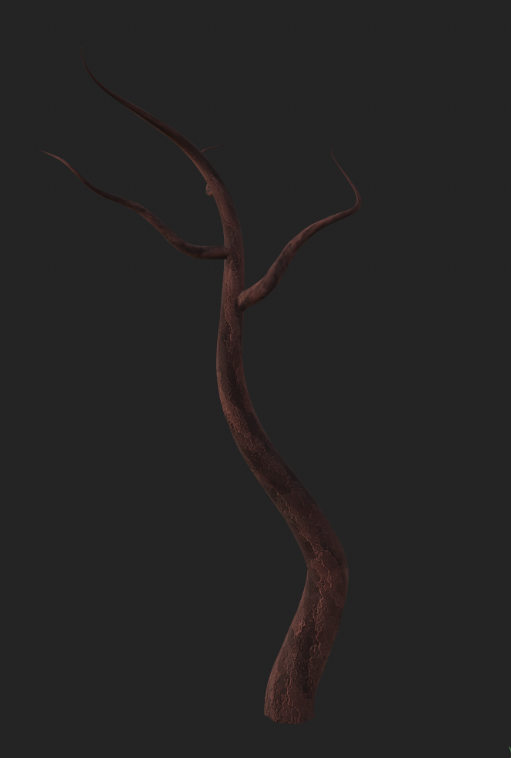
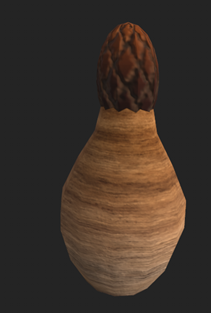
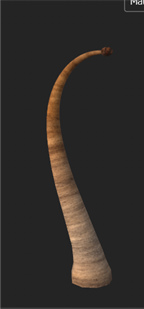
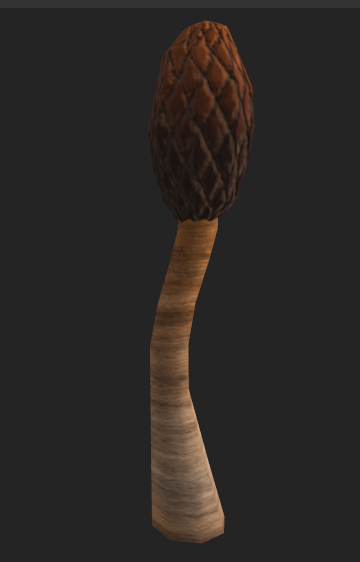
For the fronds I talked with the artist who made ground foliage, to match the palm frond style as a cohesive style is very important. Then I began to texture, with a focus on stylized aesthetics, with less concern on achieving realism.

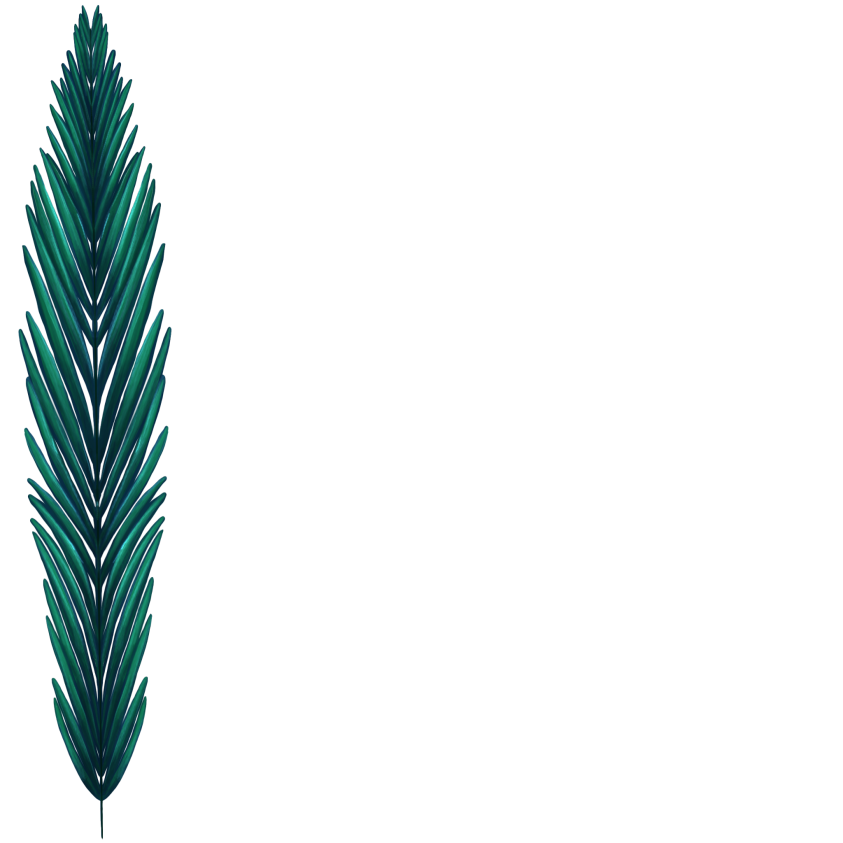

It was finally time to import assets, and I frankly should have done it sooner to ensure consistency in our lighting and environments. Upon importing and creating the leaf materials for the forest trees (Credit to the process and method used in Victoria Zavhorodnia’s stylized tree tutorials on YouTube, I learned a LOT from her!) it was time to assemble and see how my work paid off…
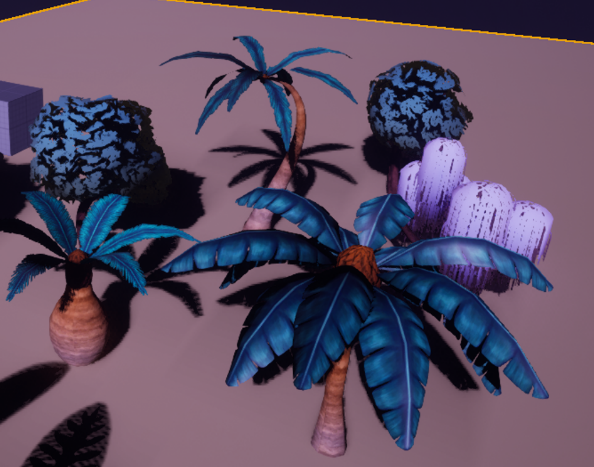
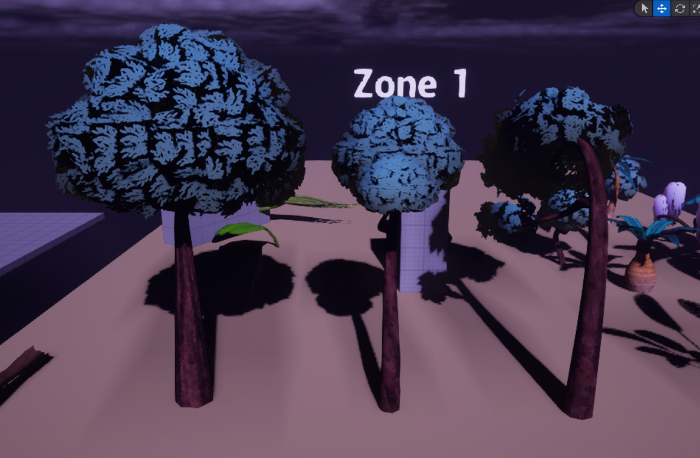
Our team lead mentioned looking at Super Mario Sunshine’s palm trees for inspiration, I think that’s particularly noticeable in the broad-leaved palm near the front on the left.
…and success! These were the trees upon initial assembly with no adjustments, more would be done, but just seeing that they showed up and appeared the way they were supposed to was amazing! This was over a month’s worth of work, and I only had a little left to do. Mainly the glow the trees needed, but some other tweaks such as the shadows in the canopies and the glossiness of the palm leaves.
Reflecting on my original goals when going into making these, I was quite successful. I learned a lot during the process, and with that knowledge I would maybe change a few things here and there in the future. However, I am still very happy with what I managed to create, and the result is precisely what we needed, stylized trees to populate our map, with a magical and whimsical feel to them to help define the atmosphere of the world.
